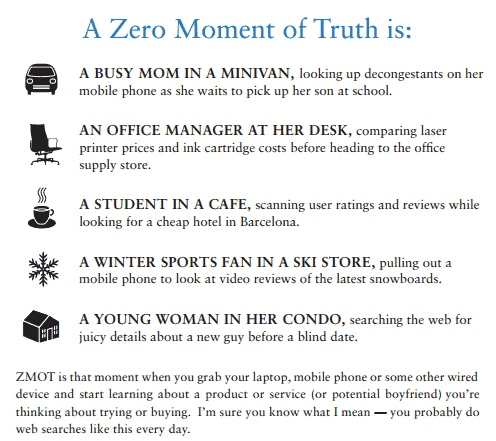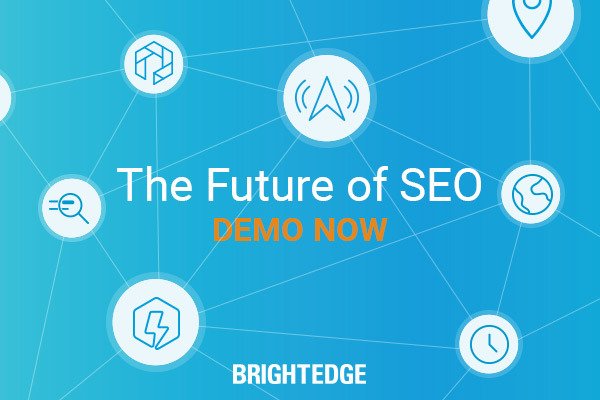Consider this scenario: your daughter has studied diligently for an algebra test. She calmly sits down at her desk, confident she’s “got this.” The instructor clicks his stopwatch – it’s the moment of truth.
At first glance, the problem seems reasonably straightforward – one that simply directs her to solve for "X." Upon further analysis, the realization hits her: solving for X means taking into account a dizzying array of variables, without the aide of a calculator!
Solving for X as a Digital Marketer
Today, as a digital marketer, you may well find yourself facing a similar moment of truth as you analyze the bewildering implications of Google’s ZMOT (“zero moment of truth”) campaign. To summarize, its mandate is to deliver the right message to the right person at the right time.
Like a mind-bending algebra problem, you realize that meeting Google’s ZMOT challenge requires factoring in a daunting number of dimensions. How can you possibly manage to deliver your brand’s “right” message to your “right” market at the “right” time? Especially at scale, and at the enterprise level?

As with algebra, the first step towards solving Google’s ZMOT problem is to define it.
The ZMOT Conundrum
To paraphrase the author of Google’s ZMOT, Jim Lecinski, “Zero Moment of Truth” is defined as follows:
- It typically starts with online search.
- More and more, it’s mobile search.
- It happens in real time, at any time of the day.
- The consumer is in charge, selecting the information he or she needs.
- The conversation is multi-way, with marketers, friends, strangers, websites and experts all having their say and competing for attention.
In essence, Google both outlines the parameters of its ZMOT problem (search, mobile, social, and content optimization), and hints at its solution.
The ZMOT Solution: Integration and Optimization
Yes, integration. It’s not merely a buzzword, it's the future of digital marketing and the fate of today’s marketer to be able to facilitate it. As I wrote at Search Engine Watch when discussing Adobe’s 2014 Summit:
Today, the reinvention of marketing and the marketer requires:
- The ability to pull together data from multiple sources in one place, process it in a standardized manner, and package it in a way a marketer can understand.
- The power to collaborate with other business units across a company and its teams when working on campaigns, so efforts are streamlined.
- The capacity to deliver a personalized experience to the customer based on a brand's understanding of who that customer is, what device they are on, and where they are interacting with the brand.
However, unlike your experience as an anxious algebra student deprived of a calculator, today, you have access to the powerful tools and the cutting-edge technologies you need to help solve the multi-faceted ZMOT equation. In short: yes, you can solve for X!
Enter Adobe Experience Manager and Content Optimizer
The dizzying array of channels that marketers must manage is one part of the equation. But the other part is knowing where to focus resources for maximum ROI. For ZMOT, the winner is search.
Organic search is the best channel to understand demand. Through this channel, marketers can uncover a wealth of data to understand what matters to their target audience. And, they can deliver their message in ZMOT fashion.
If you’re not familiar with Adobe Experience Manager, this technology helps marketers “create, manage, and optimize digital customer experiences across every channel, including web, mobile apps, digital forms, and communities.”
BrightEdge partnered with Adobe in a March announcement of the “Content Optimizer” for Adobe Experience Manager, powered by BrightEdge’s Data Cube. The Content Optimizer supports content optimization during the content creation process within Adobe Experience Manager with features like:
- Content demand targeting: Gives authors the ability to tailor content as they write it to match the topics that people are actually searching for and interested in reading.
- Real-time content coaching: Allows authors to optimize content as they create it directly within Adobe Experience Manager.
- Optimal content structure: Determine the optimal structure for effective content and set guidelines within the BrightEdge S3 platform. Then, share guidelines within Adobe Experience Manager, connecting SEO know-how with the content creation process.
In our research, we studied the impact of optimizing pages for search before they were published, and uncovered a potential to drive 10 percent more traffic, 25 percent more revenue and 50 percent less time to results for targeted pages.

This seamless integration of data between Adobe Experience Manager and BrightEdge technology also introduces efficiencies for brands by allowing individual business units or teams (SEOs and content creators) to collaborate, cutting back on redundancies and streamlining efforts.
In short, Adobe Experience Manager and Content Optimizer bridge the gap between SEO experts and content writers, enabling marketers to be better equipped to deliver the right content at the right time to the right person.
Together, BrightEdge and Adobe serve as the marketer's calculator to solve for ‘X’ in the ZMOT equation. Feel free to test your knowledge with BrightEdge Digital Marketing Quiz or SEO Quiz.
